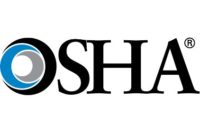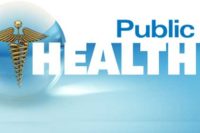 Innovative measures have limited the spread of Ebola in a part of Liberia where Firestone Liberia Inc. had established an effective health care infrastructure, according to a report in this week’s CDC’s Morbidity and Mortality Weekly Report (MMWR). Similar measures may be helpful in slowing the Ebola epidemic in other parts of West Africa.
Innovative measures have limited the spread of Ebola in a part of Liberia where Firestone Liberia Inc. had established an effective health care infrastructure, according to a report in this week’s CDC’s Morbidity and Mortality Weekly Report (MMWR). Similar measures may be helpful in slowing the Ebola epidemic in other parts of West Africa.
A rubber tree plantation
Firestone Liberia, Inc. is an affiliate of Firestone Natural Rubber Company, LLC, a division of Bridgestone Americas, Inc. Since 1926, it has operated a rubber tree plantation in an area of approximately 185 square miles within Margibi County, Liberia. Employees and their dependents live in 121 communities inside the Firestone District. Firestone provides health services to about 80,000 people including employees, retirees, dependents, and the residents of the densely populated surrounding communities. Firestone health facilities average nearly 5,500 patient visits per month.
Between August 1 and September 23, 2014 there were 71 total (confirmed and suspected) Ebola cases among the approximately 80,000 Liberians for whom Firestone provides health care – a much lower incidence rate (0.09 percent) than in the rest of Margibi County (0.23 percent) during the same period. Eighteen (32%) of the 57 patients with laboratory-confirmed Ebola survived.
Meticulous, compassionate
“I went to see the Firestone hospital in Liberia at the end of August. I saw how careful and meticulous the staff is and how compassionately they care for Ebola patients and their families,” said CDC Director Tom Frieden, M.D., M.P.H. “This shows that it’s possible to contain Ebola with meticulous attention to detail and care for patients.”
The first Ebola patient in the Firestone District was the wife of a Firestone employee who had cared for a family member with confirmed Ebola in Lofa County, the epicenter of Liberia’s Ebola outbreak in March and April 2014. The company responded with rapid establishment of an incident management system, active and passive Ebola surveillance, immediate isolation of Ebola patients in a dedicated unit, procedures for early isolation of Ebola patients, and enforcement of standard Ebola infection control guidelines.
The Firestone response had several unique elements for West Africa:
- Asymptomatic contacts with high-risk exposure were offered voluntary quarantine in dedicated facilities where they received health education, personal protective equipment, sanitary supplies, and essentials such as meals, communications, and prayer services. All of the 21 patient contacts who progressed to Ebola were among those who voluntarily quarantined.
- Integration of health education and distribution of personal protective equipment and waste disposal equipment to family members of suspected Ebola patients. As Liberia currently lacks enough Ebola treatment units to meet demand, such minimal supportive care might limit Ebola transmission among family members who must care for patients in home or community settings.
- Screening protocols permitted the hospital to isolate and care for Ebola patients in a separate, dedicated Ebola treatment unit while care for non-Ebola patients continued.
- A survivor reintegration program prepared communities for the return of recovered Ebola patients. The program consisted of community education, explaining that the survivor was Ebola free and no longer contagious, and a welcome celebration attended by local health officials, Firestone staff, and clergy. The celebrations were broadcast on radio.
- Firestone also implemented a robust risk communications and social mobilization campaign to boost community awareness of Ebola and how to prevent transmission.
The report notes that aspects of Firestone’s response to the current Ebola epidemic appear to have minimized spread among the local population and might be successfully implemented elsewhere to limit transmission.

